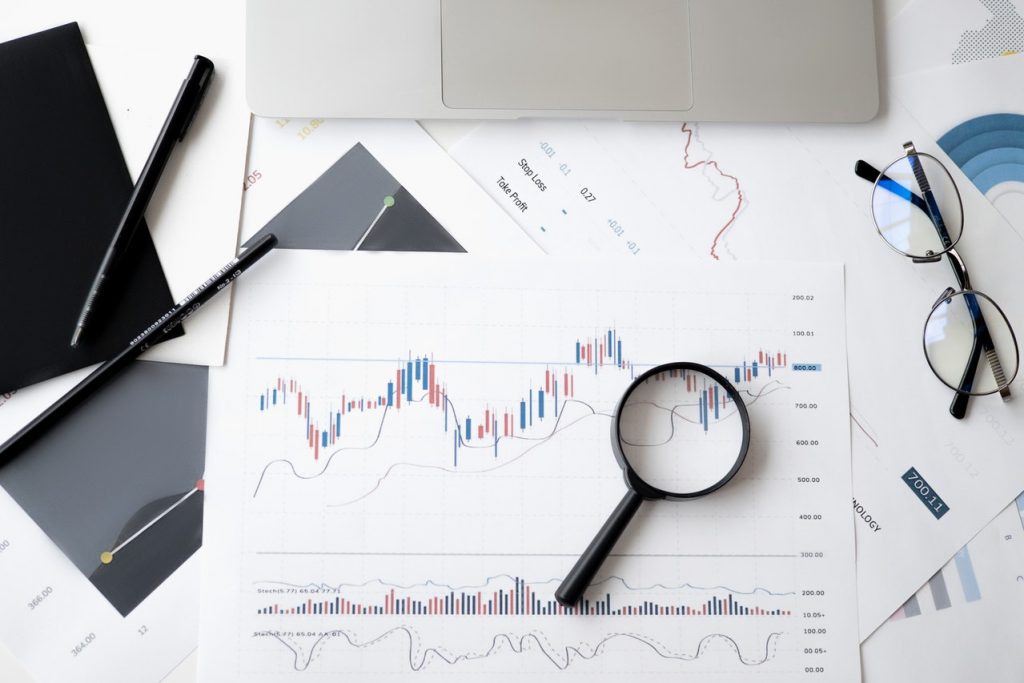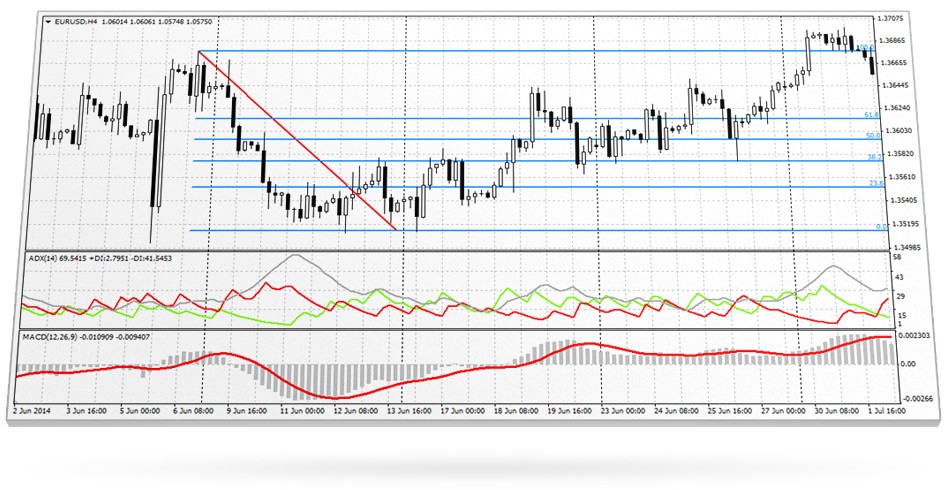Forex futures are financial derivatives. They are essentially contracts that specify when a party must buy or sell a currency and for how much. This guide to forex futures explains how they work, supporting brokers, plus popular trading strategies. We also compare forex futures vs forwards and options.
What Are Forex Futures?
Futures are a straightforward derivative contract. A derivative is when a financial instrument derives its value from the price fluctuations of another. For example, the value of a derivative linked to a foreign exchange pair, say USD/GBP, is simply a function of price movements between those currencies.
Importantly, forex futures often have their own symbols. For instance, on CME’s Group website EUR/USD has the symbol “6E”.

Spot Forex vs Futures
Many traders ask what the difference is between trading currencies using spot forex or futures. Here are the most significant considerations:
- Price – Spot forex is trading the exchange rates as they stand in the present.
- Futures are based on what they will be in the future (or what participants are willing to pay)
- Timeframes – Spot implies the “swap” of currencies when the trade is made. Futures delay this until the contract’s specified time
- Scale – Retail investors can trade spot forex, using leverage, for relatively small amounts. Futures generally require a much larger capital outlay and attract larger institutions (who might be hedging) and speculators trading larger sums
Forex Futures vs Forwards
The main difference between forwards and futures contracts is that the latter are standardized. This means forex futures come in set sizes and do not allow customization. Also, clearing houses settle them according to standard procedures. Forex futures are the most popular with retail investors.
Trading With Forex Futures
Retail and institutional investors use forex futures for hedging and speculation.
Hedging With Futures
Investors who hedge through forex futures aim to reduce exposure to currency exchange-rate fluctuations. Institutional investors tend to benefit the most from this strategy, though retail traders can also take advantage of it to a lesser degree. While forex futures-based hedging always makes mathematical sense, its effects may be insignificant on a smaller scale.
Let us consider the following example: A US company expects to receive EUR 1 million for its services rendered in Europe.
The payment will be made in 5 months.
The current EUR/USD exchange rate is 1.12. That means the EUR 1 million translates to USD 1,120,000. Any drop in the exchange rate would mean significant losses for the US company. If the rate were to drop to 1.10, it would generate a $20,000 loss.
The spot forex market does not offer the company a practical way to protect the transaction.
It can, however, sell eight EUR 125,000 forex futures, which would all result in a profit if the exchange rate were to drop. This profit would then offset the losses resulting from the transaction itself.
This example also clarifies the practice’s limitations for retail traders.
Speculation
Many traders use the forex market for speculation. They buy a specific currency, such EUR, and when the relative value goes up, they sell it for profit. The downside of this technique is that it becomes impossible to generate a profit if the price drops. This means that if you were looking to profit from the anticipated drop in value of the Russian Ruble in the Ukraine conflict, for example, you may struggle.
Futures address this issue. Traders who predict a currency’s value will decline may sell futures rather than purchase them.
In contrast to the forex market, futures are subject to exchange regulations. Due to the wide variety of contract sizes offered, they are suitable for retail investors. On the other hand, institutional investors may benefit from their liquidity, which makes them an excellent choice for those looking to take large positions.

Contract Specifications
As outlined above, forex futures contracts are standardized.
They have a set size, date of expiry, settlement rules, and many characteristics that differentiate them from other contracts.
One essential feature is the tick, which is unique to each contract. It symbolizes the minimum price fluctuation. The best way to understand the tick is through an example. On the CAD/USD pair, the tick size is $0.0001 for every CAD. With contracts standardized to CAD 100,000, this translates to $10 moves up or down.
Retail traders find regular FX futures contracts to be time-consuming and inconvenient. Fortunately, there are mini contracts available too. E-minis or e-micros, are 1/10th of the size of a regular contract.
What Is Trading Margin In Forex Futures?
The clearing houses that settle the contracts often require an initial margin from FX traders. This margin acts as a guarantee for the investor that their account can afford to support the trades.
The maintenance margin is tracked, and when it drops below a set amount, it triggers a margin call. At this point, investors need to deposit more to raise their margin level back above the preset mark. If they do not, the exchange closes their trades.
Exchanges, such as the Chicago Mercantile Exchange (CME), list exact maintenance requirements for all supported contracts on their websites.
Where Can Investors Trade Forex Futures?
The CME is the worldwide leader in forex futures trading. The exchange has been experimenting with cryptocurrency and fiat options, in addition to traditional forex futures.
Other exchanges with high trading volumes include the Intercontinental Exchange and Eurex.
Investors can trade forex futures live through an open cry-out system. However, this option has already been phased out by many exchanges. The most straightforward way is through electronic means, i.e. the internet.
Forex futures represent just another way to trade currencies. Other methods used by investors to trade forex include:
Market Analysis Tools
Both technical and fundamental analysis are used when trading forex futures, similar to stocks. Technical analysis studies the price movement of the forex market using real-time or historical charts. The investor examines important market data such as price and volume to predict future trends.

The most significant difference between forex futures and stocks analysis comes from the use of fundamental research. Forex traders must understand macroeconomic fundamentals and forecasting methods. In contrast, stock market investors derive their fundamental analysis from a company’s financial statements, health, competitors, and wider market sentiment.
Global events affect forex futures. Inflation, deflation, interest rates, political unrest, sanctions, and commodities prices are a few of the most influential factors.
Usually, a change in any of them will impact the value of a currency.
For example, the Japanese yen is particularly sensitive to energy cost, which is a commodity. This is due to Japan being one of the biggest energy producers in the world.
Final Thoughts On Trading Forex Futures
Investors frequently use forex futures to hedge or speculate on foreign exchange rates. Socio-economic factors usually impact the price of currencies, and you must take them into consideration when creating trading strategies. You also need to be aware of the margin size as it can magnify profits and losses. See our list of the best forex futures brokers to start trading today.
FAQ
What Is A Currency Futures Contract?
A currency futures contract is an agreement between two parties to exchange currency on a preset date in the future, at an agreed exchange rate.
The contract enables both parties to mitigate risk and establish an exchange rate today, for a time in the future.
This contract can subsequently be brought and sold for speculation, but ultimately, on the day of expiry, the currencies will be exchanged at the agreed rate.
Are Futures Settled Daily?
Futures are marked to market daily, and changes are settled accordingly until the expiry date of the contract.
Can Futures Be Sold Before Expiry?
Yes. Futures contracts can be sold before expiry.
However, forex futures are based on currency exchange rates, while index futures are based on the performance of specific stock market indices.
Can You Make Money Trading Futures?
Yes, it is possible to make money trading futures, but it is also possible to lose money. It requires knowledge, skill, and discipline to consistently profit from futures trading.
What Are The Risks Of Trading Futures?
The risks of trading futures include market volatility, leverage, and counterparty risk. There is also the potential for unforeseen events, such as natural disasters or geopolitical events, to impact the market and cause sudden losses.
However, they are different asset classes. Forex is used for currency trading, while indices represent a cluster of stocks. One of the pros of index futures is their exposure to a wide range of investments. They are diversified from the start.
Forex Vs. Futures Day Trading, Which Is Better?
Forex involves trading currency pairs, while futures day trading applies to many financial assets, including stocks, options, forex, bonds, and indices. They have a contract that specifies the future time and price of the sale. You should choose the option which best suits your trading style.
Forex Futures – How Do They Work?
FX futures are contracts for currencies that indicate the cost of a future exchange. Brokers such as Forex.com generate spot rates. In turn, these rates are utilized as a basis for the futures’ price quotes.
What Are The Forex Futures Trading Hours?
The main forex market is open in three sessions.
